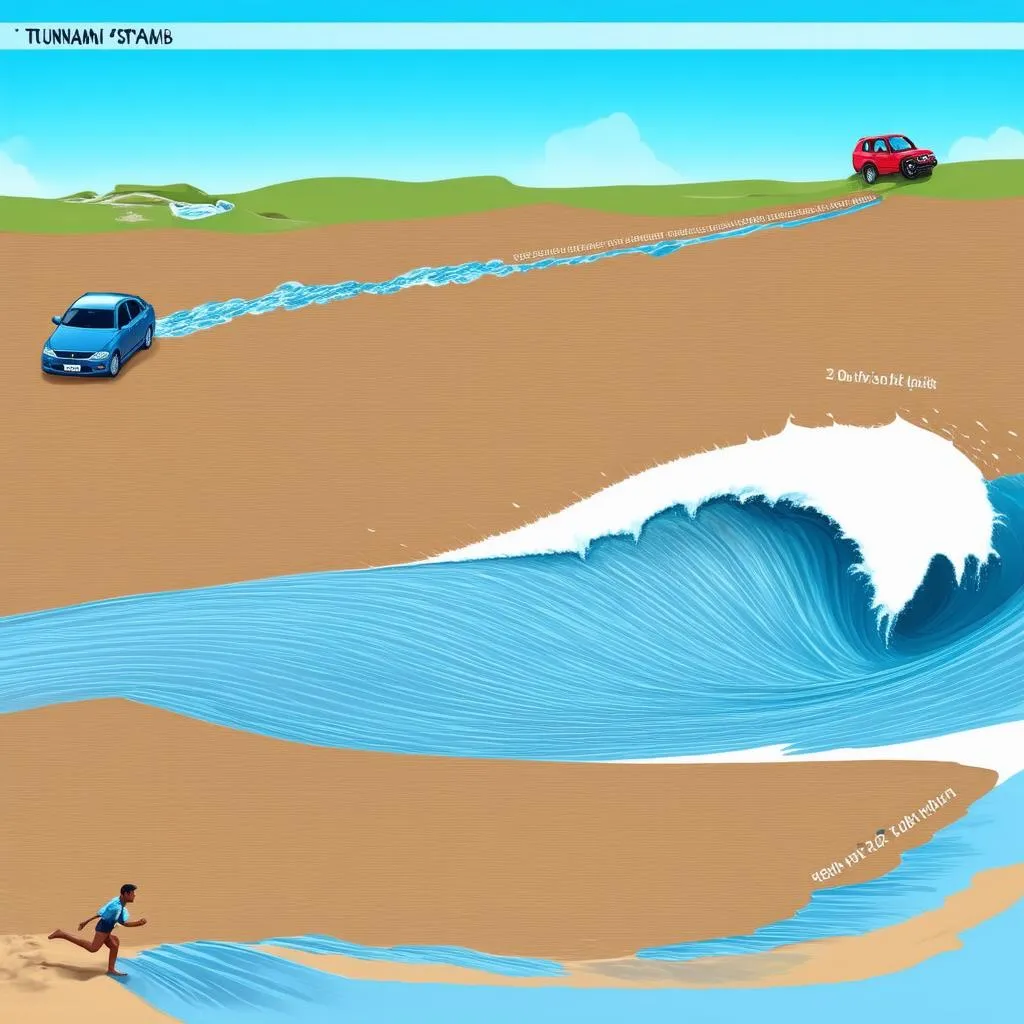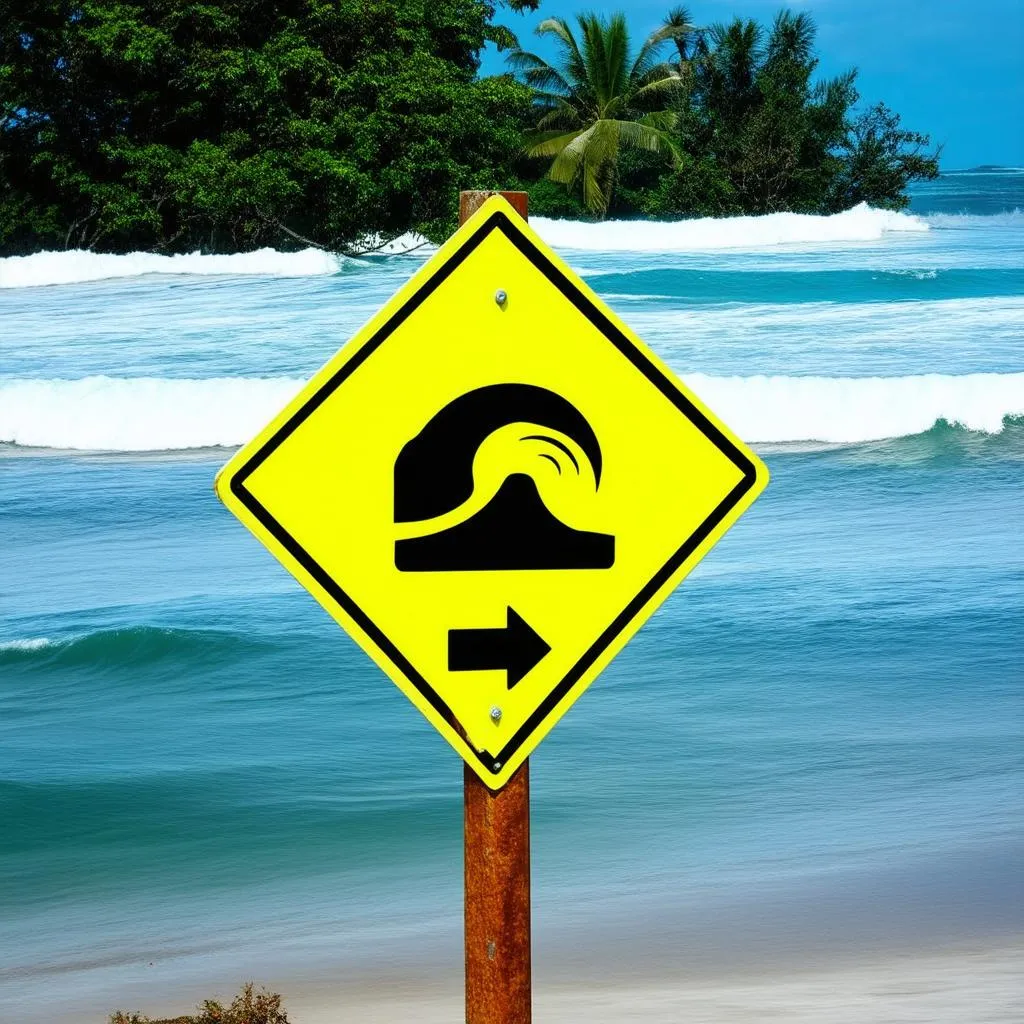Picture this: you’re enjoying a peaceful day at the beach in beautiful Bali, Indonesia. The sun is shining, the waves are gently lapping at the shore, and life is good. Suddenly, you feel the ground tremble beneath your feet. An earthquake? Maybe. But what happens next is far more terrifying. A wall of water, towering high above the coconut trees, comes rushing towards the shore with incredible speed, engulfing everything in its path. This, my friends, is the devastating power of a tsunami on land.
The Deceptive Speed of a Tsunami
While tsunamis are often depicted as giant waves crashing onto shorelines, their behavior on land is a bit more complex. It’s not just about the height but also the sheer force and surprising speed they carry inland.
You see, a tsunami doesn’t behave like a typical wave you surf on. As the tsunami approaches the coast, the shallower water forces it to slow down and build in height. But don’t let that fool you. Even with decreased speed, tsunamis can travel on land at speeds of 20-30 mph or more, depending on the terrain and the force of the wave. That’s faster than most people can run!
Factors Affecting Tsunami Speed on Land
Several factors influence how fast a tsunami will move on land:
- Slope of the Coast: A steeper coastline will generally result in slower tsunami speeds as the wave loses energy climbing the incline. Conversely, a flatter coastline allows the tsunami to maintain speed and travel further inland.
- Natural and Man-Made Obstacles: Buildings, trees, and even natural formations like hills can slow down a tsunami’s progress.
- Force of the Tsunami: The initial energy of the tsunami, determined by the earthquake or underwater disturbance that created it, plays a significant role in its speed and reach on land.
 Tsunami Speed Comparison Chart
Tsunami Speed Comparison Chart
The Devastating Impact
Imagine a wall of water, even traveling at 20 mph, slamming into buildings, cars, and anything else in its path. The sheer weight and force are unimaginable. The 2004 Indian Ocean tsunami, one of the deadliest natural disasters in history, highlighted the terrifying speed and power of tsunamis on land. It caused widespread destruction across 14 countries, tragically taking the lives of over 230,000 people.
Can You Outrun a Tsunami on Land?
The short answer is: it’s highly unlikely. While a tsunami’s speed on land might be comparable to a car, remember it’s not a race on a clear track. You’ll be navigating debris, flooded streets, and panicked crowds.
Instead of trying to outrun a tsunami, focus on getting to higher ground as quickly as possible. Every second counts. Pay attention to evacuation warnings, know your area’s tsunami evacuation routes, and if you’re near the coast and feel an earthquake, immediately head inland or to higher ground.
Planning Your Trip? Be Tsunami Aware
When planning your next vacation, especially to coastal regions, it’s crucial to be aware of the potential tsunami risks. Many areas prone to tsunamis, like Japan and the Pacific Northwest of the United States, have robust warning systems and evacuation procedures in place. Familiarize yourself with these procedures and be prepared.
Remember, knowledge is power. Understanding the dangers of tsunamis, even on land, can mean the difference between life and death.
 Tsunami Evacuation Route Sign
Tsunami Evacuation Route Sign
FAQs about Tsunami Speed
Q: How far inland can a tsunami travel?
A: This varies greatly depending on the tsunami’s force and the lay of the land. Some tsunamis might only travel a few hundred meters inland, while others can surge several miles inland. To learn more about how far inland tsunamis can travel, check out this informative article: How Far Do Tsunamis Travel Inland?
Q: Are tsunamis faster in the open ocean?
A: Yes, tsunamis can travel at speeds of up to 500 mph in the open ocean, resembling the speed of a jet plane! This is because the depth of the ocean allows the wave to travel faster with less friction.
Travel Safe, Travel Smart
Here at TRAVELCAR.edu.vn, we believe that being informed about potential travel risks, like tsunamis, is essential for a safe and enjoyable journey. Remember, while the power of nature is awe-inspiring, it’s always best to be prepared and stay informed.
Do you have any other questions about tsunamis or travel safety tips? Share them in the comments below! And don’t forget to explore our website for more insightful articles on travel-related topics.

